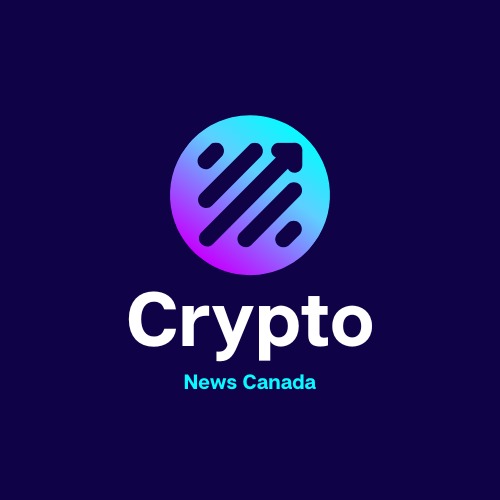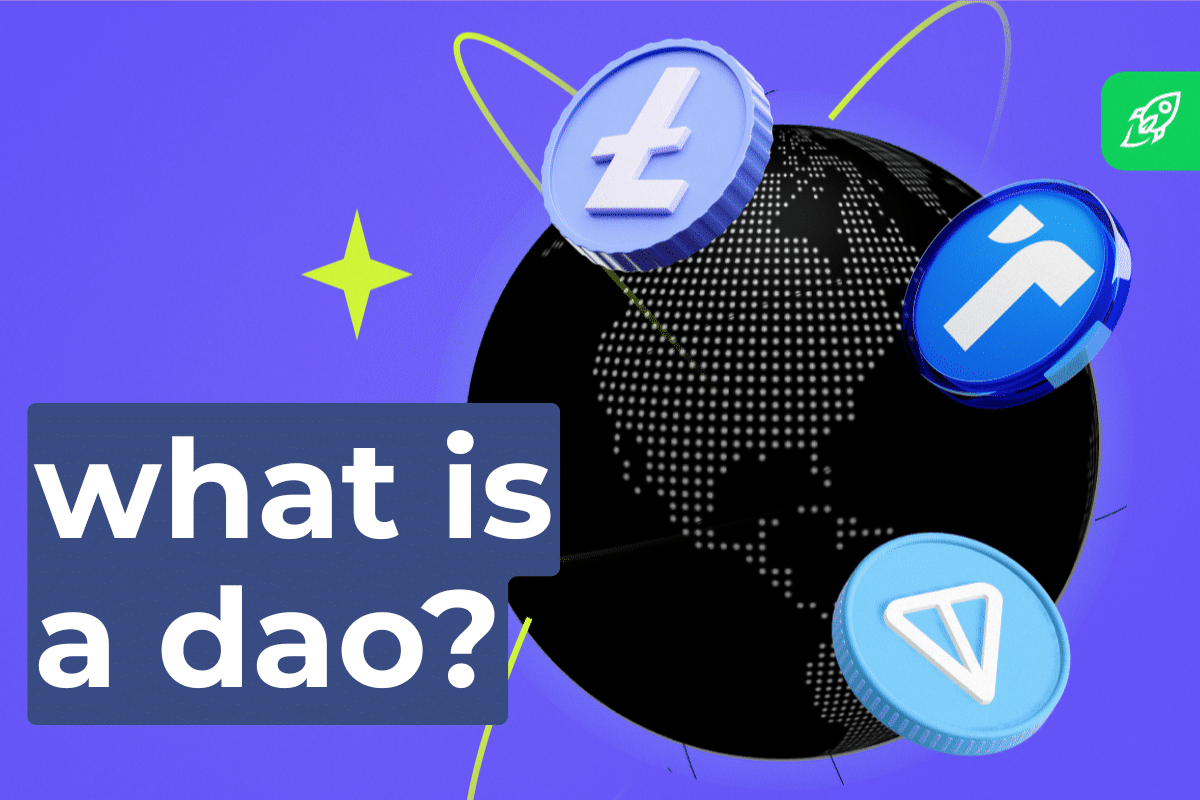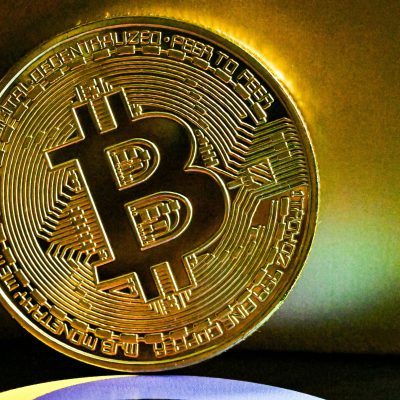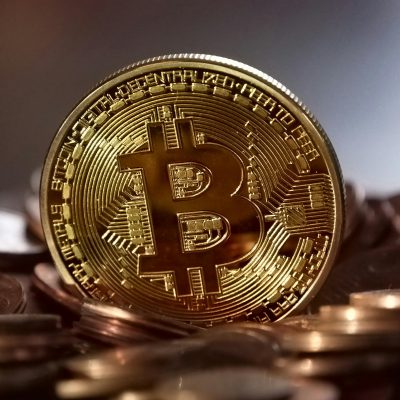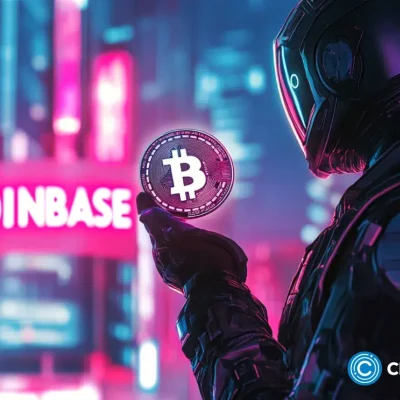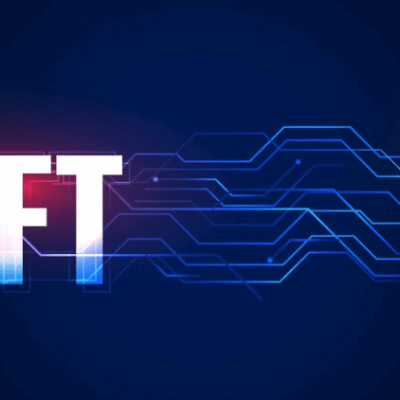Imagine an organization with no CEO and no boardrooms… Just code, and a bunch of strangers on the internet calling the shots. Sounds wild, right? Well, that’s the world of Decentralized Autonomous Organizations (DAOs).
DAOs are a new kind of organization that runs on the blockchain, not a corporate hierarchy. Members hold governance tokens, use their voting power to shape decisions, and put their trust in the DAO’s code—not managers—to automatically execute the rules.
It’s how communities use crypto tokens to coordinate, manage shared resources, and ditch centralized control. Let’s cover how exactly they work, and why they even matter.
What Are Decentralized Autonomous Organizations (DAOs)?
A Decentralized Autonomous Organization (DAO) is a blockchain-based group with no central authority, governed by its members through token-based voting or other decentralized governance mechanisms. Essentially, decisions in a DAO are made collectively by its members, who have voting power based on how many DAO tokens they own.
DAO definition
DAOs use blockchain technology to stay transparent and tamper-proof. Instead of managers and bureaucracy, they run on rules encoded in smart contracts that handle everything from how decisions are made, how money moves, and who gets a say in how things are run.
To participate, you need to hold the organization’s governance tokens on the blockchain. These are crypto tokens that give you a stake and voting rights in the organization. The more governance tokens you have, the more say you get in how the DAO operates.
They don’t rely on centralized leadership, but on the crowd. These are global groups of people with shared goals, all connected through the internet and their shares of the DAO’s tokens.
Read more: Token vs. Coin: Key Differences
It’s not chaos, just a different kind of organizational structure, one where the DAO’s smart contracts replace management, and decision-making is a team sport.
How Is a Dao Different from a Traditional Organization?
In short: traditional organizations rely on hierarchy and bureaucracy. DAOs only have to rely on automatically-executing code and the power of the collective.
In a company, power flows top-down. A central authority, usually a CEO or a board, calls the shots. Employees follow their lead. All the important decisions are often made behind closed doors.
In a DAO, that playbook’s shredded. Here’s what they have instead.
No bosses. Just a single-minded community.
No backroom deals. On-chain proposals take their place.
No delays. Smart contracts execute automatically.
The rules of a Decentralized Autonomous Organization are stored on the blockchain—meaning they’re public for everyone to see. Anyone can read the DAO’s code and check how its assets are moving. No dense spreadsheets, no corporate secrets. It’s all right there on the blockchain.
Instead of having to trust a manager, you can trust smart contracts. And instead of needing permission, you vote.
Why DAOs Matter
DAOs matter because they are a new, decentralized way of governing resources and making decisions, all without relying on traditional institutions and intermediaries like managers or banks. Instead, DAOs ask: what if we could automate decisions, govern shared assets, and coordinate cryptocurrency transactions without these middlemen?
And that’s the entire point. With DAOs, the power shifts from a central figure to a collective of members. The rules are public, the administrative processes are transparent, and every vote is traceable on the blockchain.
All you need is an internet connection and some tokens to participate. There are no gatekeepers. DAOs are open, community-run organizations that are built for a new kind of trust.
How DAOs Work
At a glance, it’s simple: DAOs operate by setting their own rules, giving members governance tokens, and letting them decide on what happens next. There’s no execs. No forms to fill out. Just proposals, and direct action.
Here’s how these organizations actually work, step-by-step.
Smart Contracts
Smart contracts are what define the DAO structure. They’re self-executing computer programs built on the blockchain. Once deployed, they follow their instructions exactly. That means no one can make any edits, and there are no take-backs.
Read more: What Are Smart Contracts?
In a Decentralized Autonomous Organization, smart contracts handle voting, treasury flows, and even facilitate cryptocurrency transactions between its members. They don’t wait for anyone’s approval. They just run—when the right conditions are met, they execute.
That’s how DAOs stay consistent. No one “forgets” the rules. They’re baked into the structure of the organization itself.
But there’s a catch: bugs in these contracts can be fatal. One line off, and the entire treasury could be drained—like what happened to The DAO in 2016. So before a DAO launches, its smart contracts need to be airtight. Audited, tested, and battle-ready.
The Role of Governance Tokens
Governance tokens are your voice in a DAO. They’re not just collectibles—they give you voting power.
If you hold these tokens, you can help steer the DAO. Vote on proposals. Suggest changes. Influence budgets, partnerships, even upgrades.
It’s simple: More tokens = more influence. No tokens = no vote.
They’re also your skin in the game. If the DAO succeeds, your tokens can gain value. If it tanks, so do they. Some organizations distribute governance tokens to early contributors. Others sell them. A few airdrop them to build community.
But no matter how you get them, tokens mean you’re a part of something bigger than yourself, and not just a spectator.
Voting Systems and Consensus Mechanisms
In Decentralized Autonomous Organizations, nothing moves without a vote. Members decide to say “yes” or “no” to different proposals. That could mean funding a project, changing the rules, or approving a new partnership.
But how does voting actually work? Well, that depends on the DAO.
Some use direct correlation, meaning 1 token = 1 vote. Some add other conditions, like requiring a minimum number of votes (a quorum), setting a passing threshold (like 60% approval) or using time windows (e.g. 7-day voting periods)
More advanced systems use quadratic voting, which gives smaller holders more influence and keeps whales in check.
There isn’t a single perfect system. Just trade-offs depending on the DAO’s priorities. But in all cases, voting is how decisions are made. It’s governance in action, with everyone shaping the future together.
Treasury Management
Every DAO has a treasury. It’s a shared pool of crypto funds on the blockchain. Think of it like a company’s bank account, but without a CFO. The collective decides how the money is used. Nothing moves without consensus. Want to propose a grant? Launch a project? The treasury won’t release a cent unless it’s voted for.
And here’s the best part: all the funds are locked into smart contracts. So there are no backdoors. No solo access. No one’s running off into the night with the whole wallet. That’s what makes treasury management in a DAO powerful—and risky. Because if the programming isn’t airtight, or if the vote gets hijacked by bad actors, the entire reserve could vanish. It’s happened before.
So DAOs build in safeguards. Multi-step approvals. Quorum requirements. Timelocks. Anything to keep the money secure—and decisions deliberate. Because when it works, the system becomes a trustless pool of treasury savings, governed by the community.
Become the smartest crypto enthusiast in the room
Get the top 50 crypto definitions you need to know in the industry for free
Types of DAOs
Not all DAOs are the same. Some manage protocols. Others invest. Some exist just to hang out or buy art. But they all share one thing: a flat governance structure, shared values, and collective decision-making.
Let’s look at a few real cases—and how they operate in the wild.
1 Protocol DAOs (e.g., Uniswap)
These organizations govern major blockchain protocols. Uniswap’s community manages its exchange: adjusting fees, launching upgrades, and generally guiding its growth. Members decide which proposals to approve, which shapes the platform’s direction. It’s DeFi, run by users instead of a company.
2 Investment DAOs (e.g., The LAO)
These DAOs pool crypto to invest in early-stage projects. One such group is The LAO (Limited Liability Autonomous Organization) which focuses on startups, giving members a way to back ventures collectively. Everyone decides what to invest in—and shares the upside if things go well.
3 Social DAOs (e.g., Friends with Benefits)
Imagine a members-only club running on crypto rails. One example, Friends With Benefits, mixes together culture, community, and Web3—granting access to events, forums, and perks based on your contribution. It’s a digital hangout for rising artists, builders, and thinkers.
4 Collector DAOs (e.g., FlamingoDAO)
These DAOs collect valuable digital assets. For example, FlamingoDAO buys NFTs—from blue-chip art to rare collectibles. Members decide what to acquire and when to sell. It’s like a digital art collection without any gatekeepers.
5 Grant DAOs (e.g., Gitcoin)
Gitcoin supports open-source projects through funding rounds voted on by the community. It matches donations to promising public goods—like developer tools or educational resources—based on collective interest. It’s philanthropy, decentralized.
6 Service DAOs (e.g., Raid Guild)
These DAOs are teams-for-hire. An excellent example is Raid Guild, a Web3 design and dev collective. Clients pay for work, and contributors earn through proposals. No HR, and no payroll. Just coordinated collaboration powered by community and reputation.
Popular DAOs in Practice
Let’s look at some real cases—the ones that made headlines, shaped the industry, or taught everyone what not to do in the future.
The DAOThe original. Launched on the Ethereum blockchain as a collective to back its projects, it raised over $150 million. Then came the hack. A coding error let the attacker siphon off around $70 million in ETH. This led to Ethereum’s most controversial hard fork and sparked debate over how autonomous organizations should handle failure.
MakerDAOThis organization runs the DAI stablecoin—a core building block of DeFi. MakerDAO members manage rates, protocol upgrades, and collateral types. It’s a real case of a DAO as a financial backbone, with votes shaping how it operates day to day.
ConstitutionDAOIt had a single mission: buy a rare copy of the U.S. Constitution at auction. Thousands joined the initiative, and it became the largest campaign of its kind, raising over $40 million, but lost to a higher bidder. The collective disbanded soon after—but not before it could show just how fast a group can coordinate such endeavors at scale.
ENS DAOShort for Ethereum Name Service, this is basically a provider of Web3 domain names. ENS switched to community governance in 2021. Now all decisions, from pricing to protocol changes, come from its participants, instead of a central team.
Nouns DAOIt mints one NFT per day—forever. Each NFT gives you a vote on how the treasury is used. It’s a long-running experiment in decentralized decision-making, branding, and open IP. Quirky, but effective.
Why Join a DAO?
Because you won’t just be supporting its mission—you’ll be able to shape it.
Joining a DAO means stepping into an organization created by the community. You help decide what gets built, funded, or changed. Whether it’s managing a project, backing a cause, or organizing events, your voice makes a difference.
You also get exclusive access. Many groups offer gated communities, chats, early product access, or unique roles based on your voting rights. It’s not just about influence—it’s about belonging.
And yes, there can even be upside. Some DAOs reward contributors with recognition, cryptocurrency, or both. The more you put in, the more you get out.
Bottom line? You’ll want to join if you want more than just a seat in the audience.
How to Join or Start a DAO
Joining is usually easy. Most Decentralized Autonomous Organizations are open, so just head to their site, connect your wallet, and get the required governance token. Some communities are free to enter. Others need you to buy in, contribute, or earn your spot. Voting happens on platforms like Snapshot (off-chain) or directly on-chain.
Starting your own DAO? That takes more effort.
Here’s the basic flow:
Define the mission
Write the rules
Deploy smart contracts
Launch your organizational structure
Gather like-minded individuals to participate
Let them vote
You can start from scratch or use DAO creation tools like Aragon or DAOhaus. Either way, be ready to answer the big questions: who decides what, how are proposals made, and what happens when things go sideways?
Start small. Keep it simple. And test everything before you go live.
DAOs: pros and cons.
The Advantages of DAOs
Why build a DAO, anyways? Well, there are a lot of reasons.
Shared control: There’s no single point of failure
Transparency: Everything happens out in the open
Borderless participation: Anyone from around the world can contribute
Automation: Decisions execute without waiting on bureaucracy
Stronger alignment: Everyone follows the same rules
This model reduces bottlenecks and avoids hoarding power. DAOs work best when trust is low, and coordination is important.
Challenges and Criticisms
DAOs aren’t magic. They break, stall, and sometimes implode.
Here’s what can go wrong:
Participation is often low. While anyone can theoretically take part, a lot of people don’t. That leaves decisions in the hands of a small number of active participants—and sometimes, that’s just a few large holders steering the ship.
Security is another issue. A flawed contract can lead to disaster. As we’ve seen, one misstep here can leave the DAO drained overnight.
Then there’s the pace. Without a leader, decisions can take time. Discussions stretch, proposals stall, and urgency gets lost in the crowd.
And finally, law. Most of these organizations don’t exist as recognized legal entities. That makes things messy when dealing with regulators, securities laws, taxes, or contracts in the real world.
The Future of DAOs
Yes, DAOs can be messy sometimes. But they get back up quickly.
More and more builders are refining their mechanics, creating better voting tools, safer contracts, and smarter governance models. Some DAOs are even wrapping themselves in legal structures to stay compliant without losing their edge.
In the coming years, we’ll likely see hybrid setups. Part on-chain, part off-chain. Part autonomous, part curated. The goal? Keep the transparency and participation, but avoid the chaos.
As adoption grows, expect DAOs to run more than just crypto projects. Think media collectives, gaming guilds, nonprofits, even businesses.
The structure is still new. But the idea? It’s not going away anytime soon.
Resources and Communities to Explore DAOs
Want to dive deeper? Start here:
Ethereum.org – A beginner-friendly overview from the network where most DAOs live.
Aragon – A toolkit for launching your own DAO—no hardcore coding required.
DAOhaus – A platform for building and joining community-driven DAOs.
Snapshot – What many DAOs use to vote. Simple, off-chain governance at scale.
DeepDAO – Analytics and rankings for hundreds of active DAOs.
r/dao – Reddit’s DAO hub. Casual discussion, updates, and questions.
Final Thoughts
If you’ve ever wanted to help steer the ship instead of watching from the dock, DAOs are worth your attention. They’re a quickly-growing part of the crypto space.
They aren’t perfect. But they’re powerful. They give people real control instead of empty promises. You don’t need permission to start one, or to join. All you need is a collective group with a shared goal and a willingness to act together.
Yes, there are risks. Bugs. Bad decisions. But there’s also something brand-new here: a way to build organizations that are open, transparent, and member-run from day one.
FAQ
How does a DAO make money?
Most DAOs earn by providing services, managing protocols, or holding assets that increase in value. Some also charge fees or receive donations.
What is the primary purpose of the DAO?
To let a group manage shared goals or resources without centralized leadership. Each DAO defines its own mission—from building products to collecting art.
What is the biggest DAO?
Currently, MakerDAO and Uniswap DAO are among the largest, managing billions in crypto assets. Their size is measured by the number of assets under governance and the amount of active participation.
Are DAOs legal in the US?
It’s complicated. DAOs aren’t fully recognized under federal law, but Wyoming, for one, allows them to register as LLCs with some legal protections.
Do I need to invest money to join a DAO?
Not always. Some DAOs require a buy-in, but others let you earn your way in through contributions or open participation.
How do I know if a DAO is trustworthy or legitimate?
Check the contract audits, transparency of decisions, and how active the community is. If things are mostly hidden or vague, it’s safer to walk away.
Disclaimer: Please note that the contents of this article are not financial or investing advice. The information provided in this article is the author’s opinion only and should not be considered as offering trading or investing recommendations. We do not make any warranties about the completeness, reliability and accuracy of this information. The cryptocurrency market suffers from high volatility and occasional arbitrary movements. Any investor, trader, or regular crypto users should research multiple viewpoints and be familiar with all local regulations before committing to an investment.
